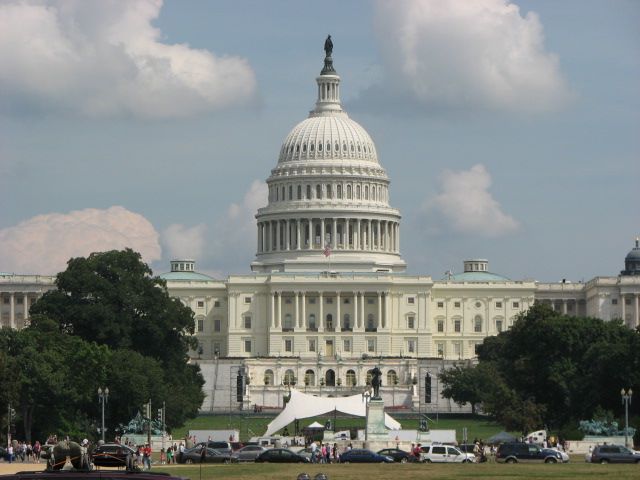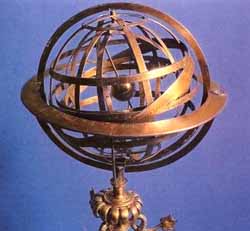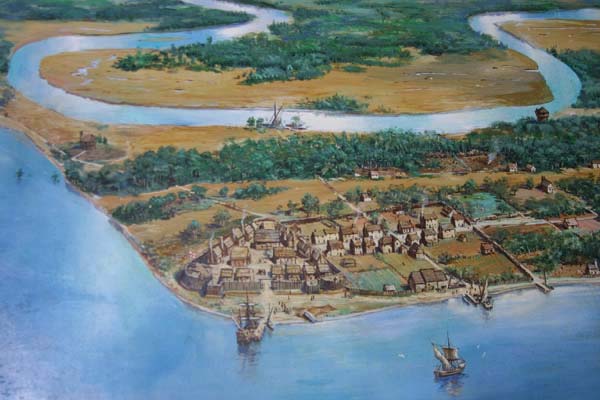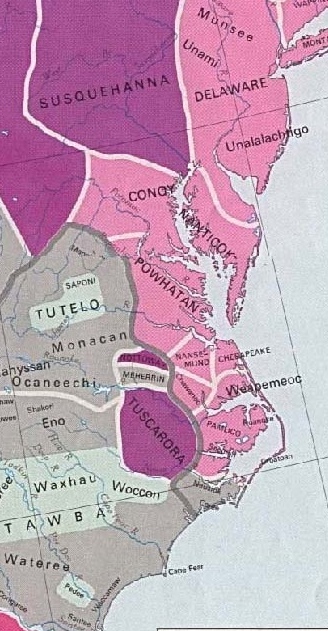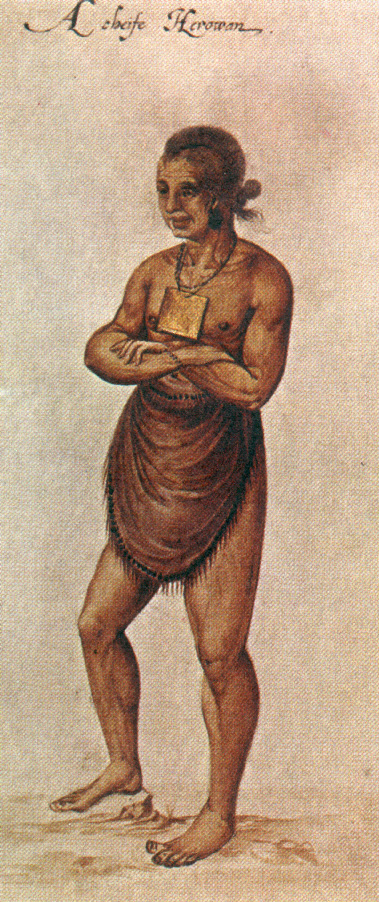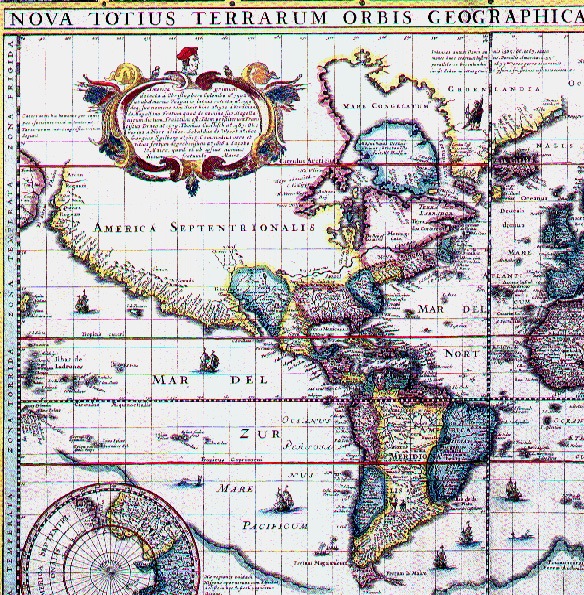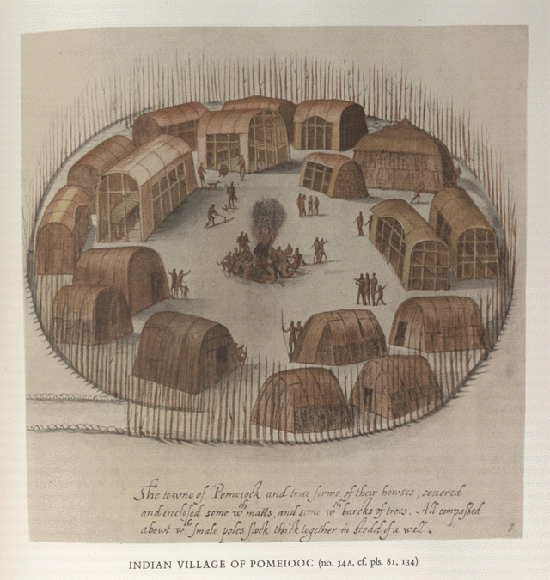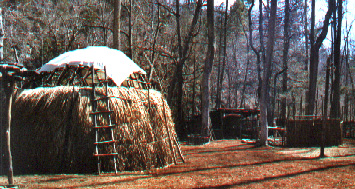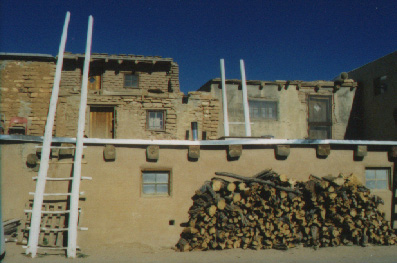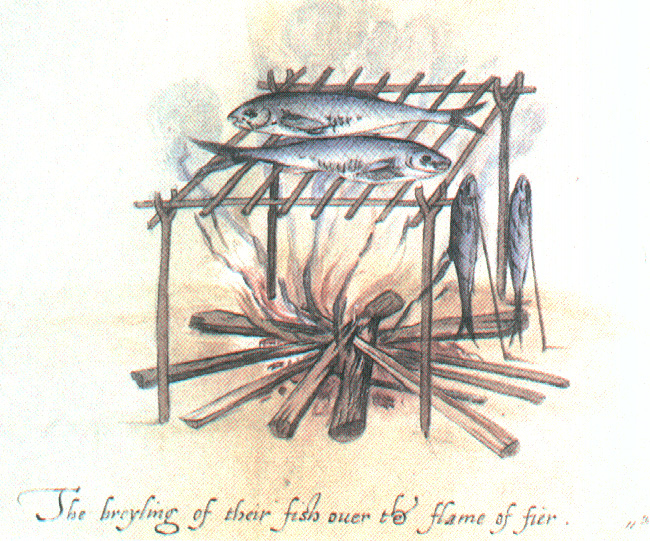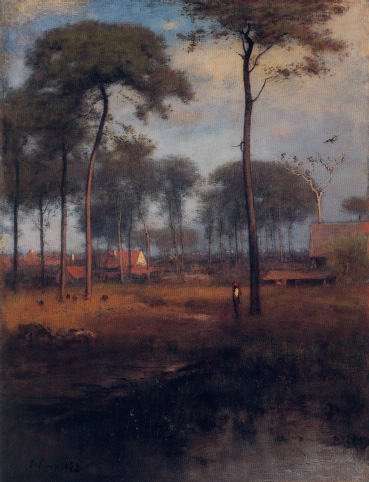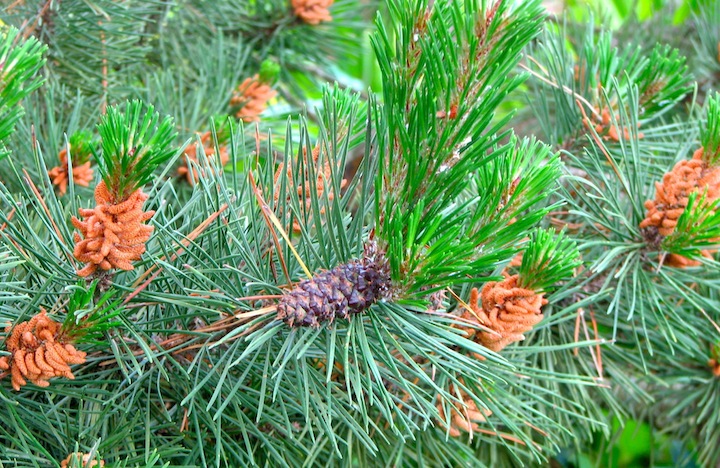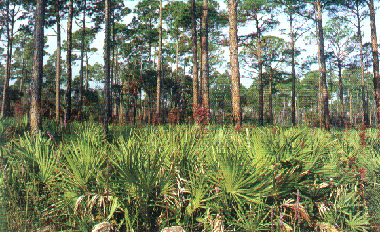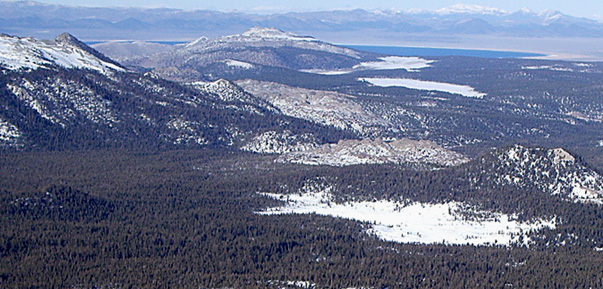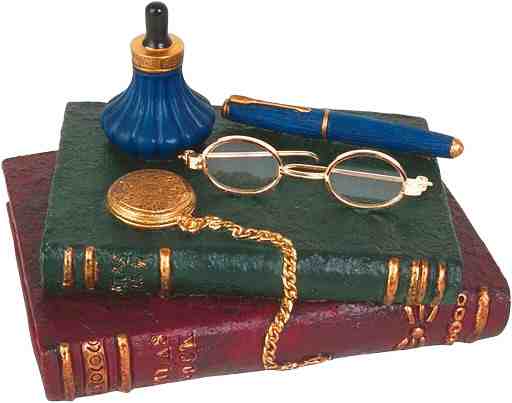 Too Many Trees
Too Many Trees

Cornplanter was a headman of the Seneca nation from 1784-1836.
Jamestown, 1608: An artists imaginative rendering of the city as it resides in a low lying area beside the bay and was rimmed along by swamps and lowlands that were inhospitable to development.
Jamestown, Virginia was on a tributary of the Chesapeake Bay, Americas largest estuary forming an inland, or tidal sea.
It took the colony nearly a century before it moved the capital of Virginia from the malarial prone setting of Jamestown to land upstream along the James River in Williamsburg.
Fifty years after the settlement the European map of the America's shows the southern focus of settlements
Visualize
How Indians, properly called Native Americans, lived quite differently.
Tides at flood stage could bring ships up to these settlements and at the ebb stage take ships out to sea, even when the winds were not favorable for navigation. The native peoples were able to catch sufficient fish, lobsters, clams, oysters, and birds to heavily more populate coastal estuaries.
John White in 1585 accompanied the English expedition to the Chesapeake Bay region and in his watercolors reveals the indigenous people's practices. These are among the earliest visions we have of American people's existence prior to settlement.The lack of sufficient supplies led to terrible famines and disease outbreaks in this tidewater settlement.
John White's watercolor drawing of a Native village in 1585.
Virginia & New Mexico
Native materials reveals the close association if the indigenous people and the land.
Natives of the Hopi Nation refer to these buildings above – an indigenous place of worship – as a Kiva and it represents a landscape from which these people believe they originally emerged bearing corn.
indigenous - from the local area.
native - born in a place or region.
first nations - name given in Canada to native peoples as a signal of respect.
Indians - the name given to inhabitants of the Americas (American Indians) indicating the European error in thinking Columbus had reached Asia and the East Indies, not --as he had-- the west Indies.
Amerindians the term from combining American with Indians.
Kiva, The Puebloan – a southwest native people's – term for sacred and ceremonial rooms.
John White's watercolor drawing of Native people's food preparation in 1585.
Forestry policy
"Big campaign money buys special access. . . "
John Dean, Worse than Watergate. p. 76.
Tarpon Springs ". . . an infinity of pines," from north of Jamestown (Southern New Jersey actually) to central and south Florida, the coastal plain's sand soil is covered with different kinds of pine trees. So much so the early Europeans called them "pine barrens."The pine barrens were sources of tar, pitch an turpentine used in ship building and thus the political economy of the 17th and 18th centuries called these Naval Stores, while the larger white pines were used for masts of sailing ships due to their strength. Coastal oak was also used for shipbuilding and wax myrtles for candle making.
Sources
Mary Austin,
The Owens Valley was a gift of the Eastern Sierras, the enormous mountains that are also volcanoes and the Long Valley Caldera, to the high desert in the form of an adequate annual water flow, even in the drought prone years since snow melt from the high Sierra waters the canyons and plains of the valley.
Mono Lake [named for the native people there] as seen from the crest of the Sierra Nevada Mountains of California looking north, by northeast.
carrying capacity and assimilative capacity contrasted
J. Siry, Dated: January 28, 2012 and 19 November 2007



